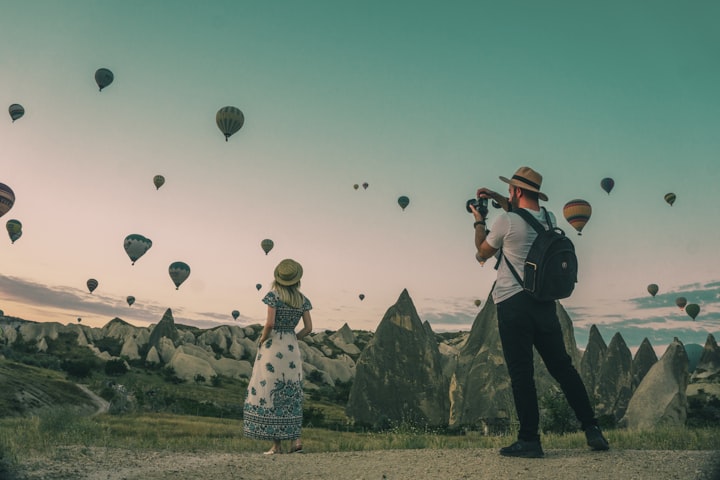10 Tips For Nature Photography.
Take your Nature photos to the next level.

What is an inspiring nature photo now? Such a photo should provide the viewer with new thoughts, new ideas, new plans. It should make you think and make you curious. Besides, the photo must be strong, attractive, and technically correct. But how do you do that?
In this article, a dozen tips that will hopefully help you on your way.
1. Good preparation
An inspiring nature photo is, of course, more than a beautiful picture of the environment.
Wonderful and inspiring nature photos are a combination of a good idea (the image you want to make should actually already be in your head), solid preparation, good technique in the field, and, finally, careful post-processing.
You also have to take into account all the weather conditions. You have to protect yourself against this with warm, rainproof clothing, but it is also useful to bring a good weather seal for your camera.
2. Distinguish yourself
Look a lot at photos from other nature photographers and see how they could have been taken. Try taking a similar photo (if conditions and surroundings allow it).
This is a good way to get to know the functions of your camera and the associated techniques. If that works, you could try to distinguish yourself from the many (beautiful) nature photos that can be found online.
3. The type of camera
You don't necessarily need the best equipment to take an inspiring nature photo. Don't have the latest camera or a bag full of lenses? Don't worry; a simple camera lets you focus on composition and timing.
I often don't use more than one lens myself. That way, I can concentrate on the image I want to capture.
4. Landscapes?
Most photographers feel more confident when photographing landscapes than when capturing, for example, people or animals (wildlife). Landscapes do not move, say nothing in return, and do not fly away just when you press the shutter button.
This means that your landscape photo has to stand out even more than all those other landscape photos.
5. Composition
The composition is important in every photo, but this is even more true for landscape photos. There are many ways to make your photos stand out. Below are four ideas.
Have something in the foreground, such as a person or protruding tree branch. By not placing the subject in the center of the image, you give the image depth;
If you rotate the camera 90 degrees, you can take vertical photos instead of the traditional horizontal photos. This gives you a completely different view of the scene in front of you;
Use a slower shutter speed. You probably think there is little movement in a landscape, but is there any? Branches and grass move even in light winds, and the water in streams and waterfalls always flows; A shutter speed of about one second blurs all this movement in the landscape, creating a dreamy photo where tree trunks, walls, and buildings remain in focus. Put your camera on a stable surface, preferably on a tripod;
Look at the details. Photographers tend to want to include the overall picture in landscape photos. But often, it is the small details that make a photo special.
6. Color or not
In black and white photos, all color is absent. This emphasizes shades and contrasts. Black and white are very applicable to winter landscapes. At the end of winter, large objects in photos have little color anyway.
You can then focus on the shapes of the bare trees, stone walls, and buildings. Composition and contrast then become extra important for the photo. Black and white is the perfect medium for this.
In the spring, it will be a different story. Explosions break the black and white of bright colors, such as flowers emerging from the ground or buds on trees and shrubs.
7. Experiment
The best photos are often created by experimentation. Try out the functions of your camera and see what it does to your photo. Try an unusual approach.
For example, by placing the focal point in a different place than where you would expect it to be, the viewer's eye is guided somewhere.
A few suggestions to try:
- Measurement methods: Evaluative metering is the default setting on your camera. Values are measured at various points within the frame. The exposure is adjusted accordingly to compensate for special lighting conditions. Center-weighted metering monitors the entire scene with an emphasis on the center plane. This is a suitable method for landscape photography. Spot metering: means values are measured only from the center plane of the image. This is useful for obtaining the correct exposure for a specific part of the subject.
- Exposure compensation: This allows you to increase or decrease the exposure by two steps to make the image darker or lighter. Increase the compensation (+) for extra exposure and thus a brighter image. Lower the compensation (-) for less exposure and, therefore, a darker image.
- Recording modes: you can set the exposure of your photo yourself. Adjust shutter speed by setting Tv, aperture priority setting Av, or both with M (manual). Refer to your camera's instruction manual for more information.
8. Flashlight
The use of flash in nature photography is seen as controversial. Yet, it can provide extraordinary effects. Photography is playing with light, and if you have the option of using artificial light, I would certainly use it.
It is important to pay close attention to your subject to see whether something is disruptive or not. Animals cannot communicate verbally, so it is important to pay close attention to what you are doing.
9. Nature and emotion
Nature does something to you, physically and emotionally. Nature is our home, and we are starting to lose that a bit. You can show in your photo that nature, our home, is something to be cherished.
Moreover, it is often wonderful to move around in nature to play in it. I think that is very important for the development of any photographer.
With your photography, you can tell stories, and in this way, you could also contribute to a better environment and a different view of nature. How you show your viewers the value of nature depends on the story you want to tell. You can shoot a beautiful or more confrontational image.
10. Beyond imagination
But when do you know if you got something good? A good, inspiring photo is difficult to define. Often it is a feeling, and you know 'you have it.' Try to take pictures that, regardless of the story you want to tell, go beyond your imagination.
When you know you took a photo that you can never repeat because something is so unique, then you know it was yours.
Furthermore, behind every good, inspiring nature photo, there is, of course, a dose of happiness, something you can enforce with a lot of time and patience.






Comments
There are no comments for this story
Be the first to respond and start the conversation.